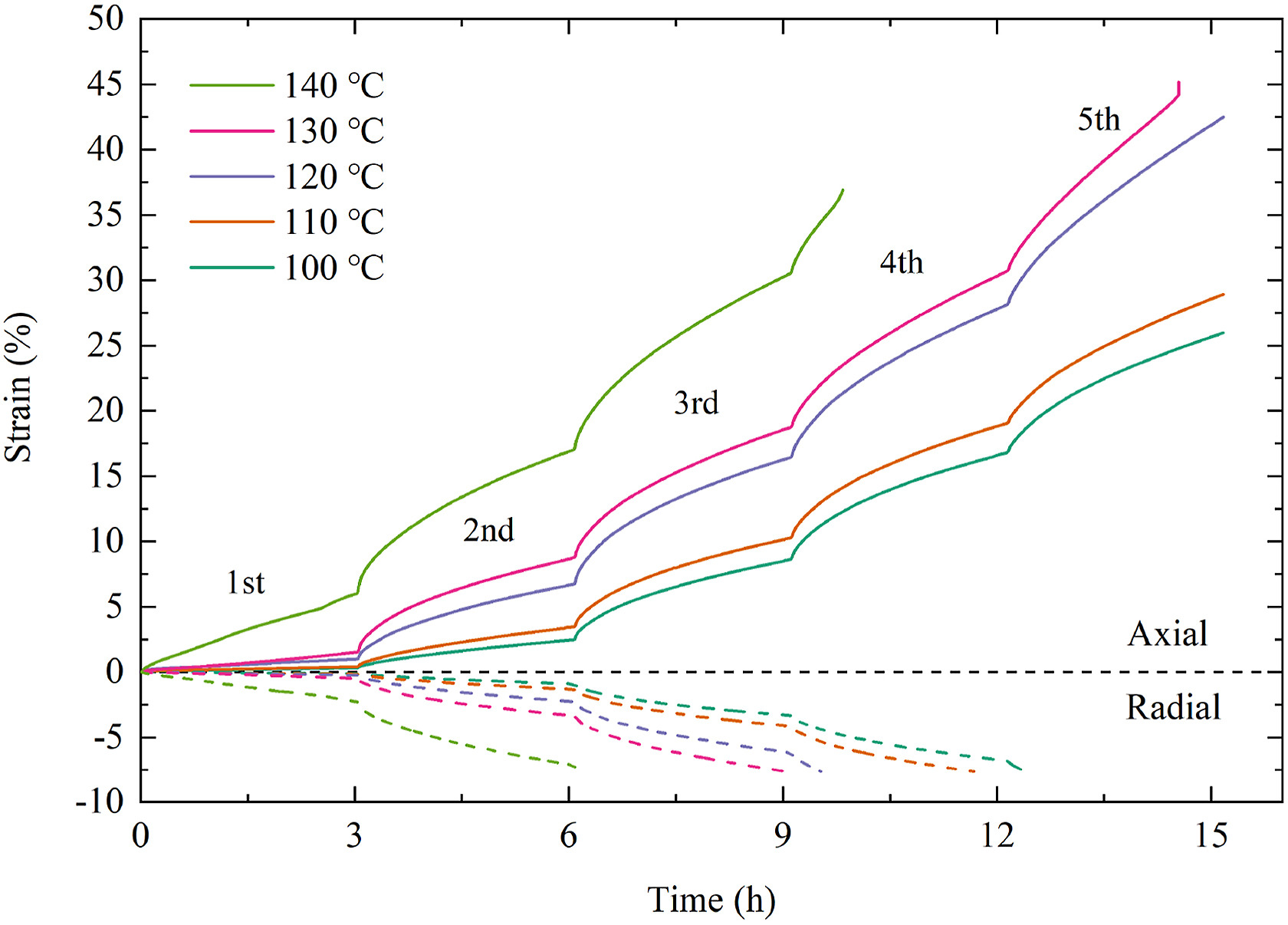JRMGE / Vol 16 / Issue 2
A creep model for ultra-deep salt rock considering thermal-mechanical damage under triaxial stress conditions
Chao Liang, Jianfeng Liu, Jianxiong Yang, Huining Xu, Zhaowei Chen, Lina Ran
Show More
a College of Water Resource and Hydropower, Sichuan University, Chengdu, 610065, China
b CNPC Key Laboratory of Oil and Gas Underground Storage Engineering, Langfang, 065007, China
c CNPC Engineering Technology R&D Company Limited, Beijing, 102206, China
2024, 16(2): 588-596. doi:10.1016/j.jrmge.2023.06.009
Received: 2022-12-16 / Revised: 2023-05-15 / Accepted: 2023-06-15 / Available online: 2023-07-28
2024, 16(2): 588-596.
doi:10.1016/j.jrmge.2023.06.009
Received: 2022-12-16
Revised: 2023-05-15
Accepted: 2023-06-15
Available online: 2023-07-28
To investigate the specific creep behavior of ultra-deep buried salt during oil and gas exploitation, a set of triaxial creep experiments was conducted at elevated temperatures with constant axial pressure and unloading confining pressure conditions. Experimental results show that the salt sample deforms more significantly with the increase of applied temperature and deviatoric loading. The accelerated creep phase is not occurring until the applied temperature reaches 130 °C, and higher temperature is beneficial to the occurrence of accelerated creep. To describe the specific creep behavior, a novel three-dimensional (3D) creep constitutive model is developed that incorporates the thermal and mechanical variables into mechanical elements. Subsequently, the standard particle swarm optimization (SPSO) method is adopted to fit the experimental data, and the sensibility of key model parameters is analyzed to further illustrate the model function. As a result, the model can accurately predict the creep behavior of salt under the coupled thermo-mechanical effect in deep-buried condition. Based on the research results, the creep mechanical behavior of wellbore shrinkage is predicted in deep drilling projects crossing salt layer, which has practical implications for deep rock mechanics problems.
Keywords: Creep experiments, Creep model, Thermal and mechanical damage, Fractional derivative
Article Data
Author(s) Information
Jianfeng Liu

Dr. Jianfeng Liu obtained his PhD from College of Water Resources and Hydropower, Sichuan University, China, in 2009. He was selected as a Distinguished Professor of Changjiang Scholar Program as well as Academic and Technical leader of Sichuan Province in 2020. In 2022, he was granted the Science and Technology Award (Youth Innovation) by Ho Leung Ho Lee Foundation. He has been engaged in the basic theory and engineering practice research on deep rock mass mechanics. He has published more than 130 journal papers.

